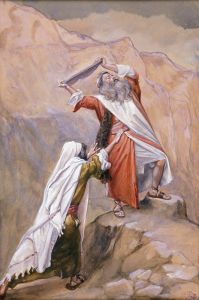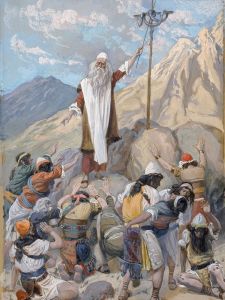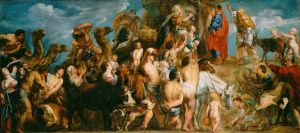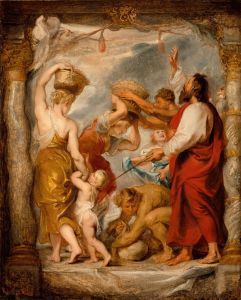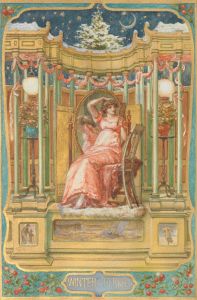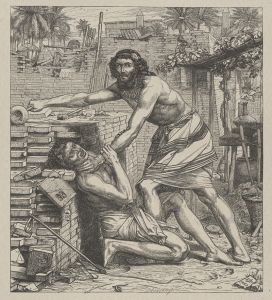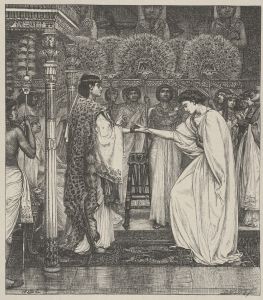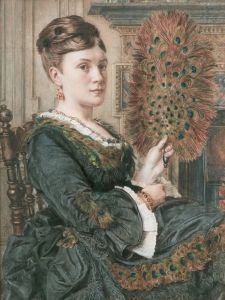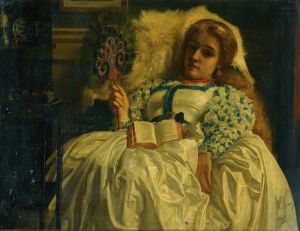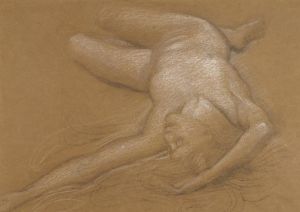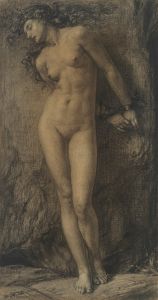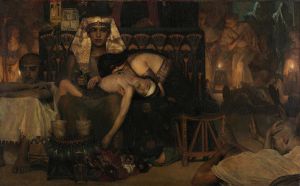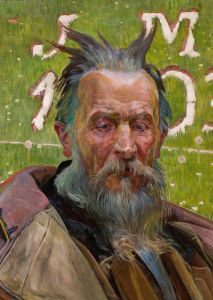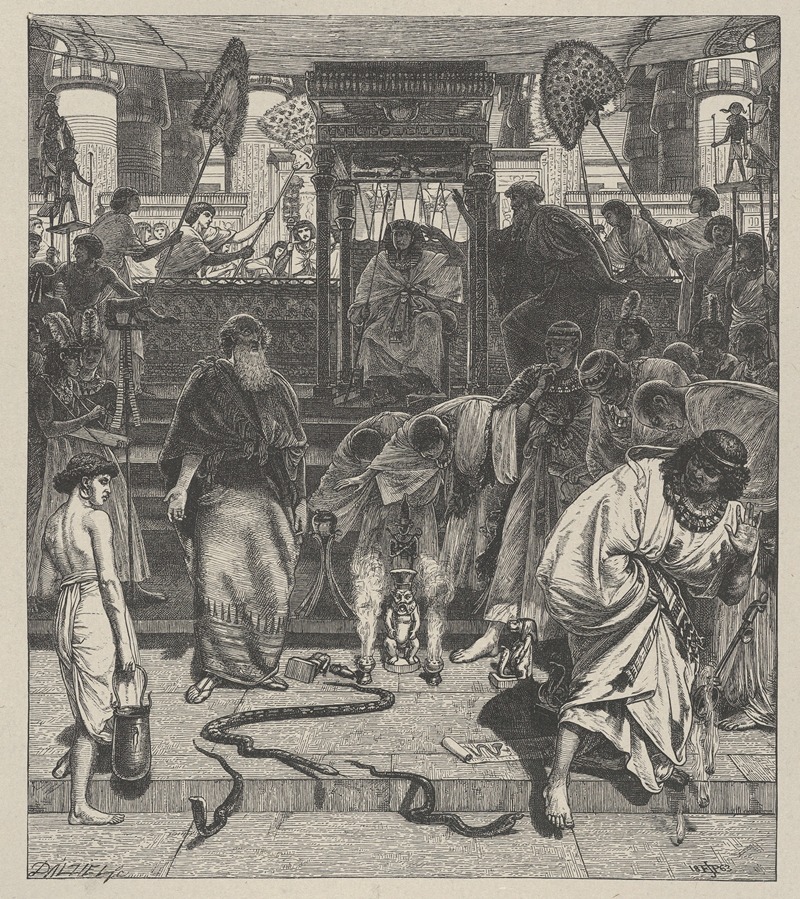
Moses and Aaron Before Pharoah
A hand-painted replica of Edward John Poynter’s masterpiece Moses and Aaron Before Pharoah, meticulously crafted by professional artists to capture the true essence of the original. Each piece is created with museum-quality canvas and rare mineral pigments, carefully painted by experienced artists with delicate brushstrokes and rich, layered colors to perfectly recreate the texture of the original artwork. Unlike machine-printed reproductions, this hand-painted version brings the painting to life, infused with the artist’s emotions and skill in every stroke. Whether for personal collection or home decoration, it instantly elevates the artistic atmosphere of any space.
Edward John Poynter's painting "Moses and Aaron Before Pharaoh" is a significant work of art that reflects the Victorian era's fascination with biblical themes and historical accuracy. Poynter, an eminent British artist known for his meticulous attention to detail and classical style, created this painting in 1894. It is one of his many works that explore historical and mythological subjects, showcasing his skill in rendering complex narratives with precision and depth.
The painting depicts a scene from the Book of Exodus in the Hebrew Bible, where Moses and his brother Aaron confront Pharaoh, the ruler of Egypt, demanding the release of the Israelites from slavery. This moment is pivotal in the biblical narrative, as it sets the stage for the subsequent plagues that befall Egypt and the eventual liberation of the Israelites. Poynter's interpretation of this scene captures the tension and drama inherent in the biblical account.
In the composition, Moses and Aaron stand before Pharaoh, who is seated on a throne, surrounded by his courtiers and advisors. The setting is opulent, reflecting the grandeur and power of the Egyptian court. Poynter's attention to historical detail is evident in the depiction of the costumes and architecture, which are inspired by ancient Egyptian art and artifacts. This commitment to authenticity was a hallmark of Poynter's work and aligns with the Victorian interest in archaeology and the rediscovery of ancient civilizations.
Moses is portrayed with a commanding presence, holding a staff, which is a symbol of his divine authority and the miracles he would perform. Aaron, standing beside him, is depicted as a supportive figure, reinforcing the partnership between the two brothers in their mission. Pharaoh, on the other hand, is shown with an expression of skepticism and defiance, embodying the resistance that Moses and Aaron would face in their quest to free their people.
The painting is characterized by its rich color palette and intricate detailing, which are typical of Poynter's style. The use of light and shadow adds depth to the scene, highlighting the emotional intensity of the encounter. Poynter's ability to convey narrative through visual elements is evident in the way he captures the expressions and body language of the figures, effectively communicating the story without the need for words.
"Moses and Aaron Before Pharaoh" is housed in the Art Gallery of New South Wales, Australia. It is part of the gallery's collection of 19th-century European paintings, which includes works by other prominent artists of the period. The painting is appreciated not only for its artistic merit but also for its historical and cultural significance, as it reflects the Victorian era's engagement with biblical themes and the broader interest in the ancient world.
Edward John Poynter's work continues to be studied and admired for its technical excellence and its ability to bring historical and mythological narratives to life. "Moses and Aaron Before Pharaoh" remains a testament to Poynter's skill as an artist and his contribution to the art of his time.





